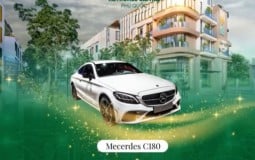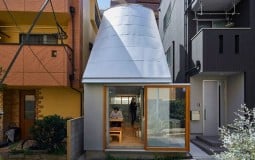In practice, this means that the diamond-like object hanging under the colorful gear box will slowly rotate as soon as sunlight hits the box. The chance of this is even greater if the box is stuck to a south-facing window with a suction cup. Once spinning the diamond, which Kikkerland throws it Swarovski Crystal calls, colorful, mobile spots on walls and cupboards: solar spectra as you would never make them yourself. A feast for the eyes and that it makes you mad is nonsense.
Gradually it becomes apparent that the diamond always rotates in the same direction and always makes exactly 3 rotations per minute, whether it receives a lot of or little sunlight. It spins at 3 rpm or it doesn’t spin. How does this work, you want to know, but you don’t get to hear about it from the American patent. It describes how Kikkerland got his great idea and what you can expect from the invention, and it focuses further on the operation of the light-refractory crystal, the refractory crystal, but without telling what it consists of: glass or ordinary plastic. The patent is very short about the drive of the crystal: there is a photovoltaic cell, an electric motor and a transmission. That’s it.
Untouchable diamond
The crystal is made of glass, which was quickly demonstrated. It weighs 14 grams and was found to have a volume of 4.5 ml when immersed in a graduated cylinder. This brings the specific mass to 3.1 g/cm3, well outside the range of conventional plastics, but within that of special glass types. Acetone did not affect the diamond nor could it be scratched.
The plastic cogwheels of the gear train that turns the diamond resemble the gears you see in classic timepieces. Two gears, one large, the other small, are always mounted concentrically on each other. The teeth of a small wheel always drive the teeth of a large wheel next to it.
It is a tried and tested method of creating deceleration while still exerting considerable forces with modest power. The train starts high in the box with a 12-tooth gear mounted on a coarse, round metal disc that runs at breakneck speed when in full operation. Its teeth mesh between the 40 teeth of a pink wheel next to it, which in turn engages with its 12 teeth on an orange wheel with 50 teeth. And so forth. The gear ratios range from 2:1 to 4.5:1. The train ends at the bottom with an angled 1:1 transmission by means of bevel gears with 18 teeth each. They rotate at the mentioned 3 rpm. Counting your teeth, you can see that the small wheel spins 130 to 155 times faster than the diamond. There is not much more to say about it. Obviously the sprockets are not made specifically for the Rainbow Maker, as some sprockets are not used.
Metal disc with 12 teeth
The Rainbow Maker’s wonder lies in the fast-spinning metal disc with those 12 teeth, right next to a coil of fine copper wire. How that gets into motion was a mystery that a long time ago a similar configuration had been encountered when dismantling a HEMA quartz clock. For the occasion, such a clock has again been taken apart.
And indeed. It turns out that analog quartz clocks are driven by a so-called stepper motor, a Made-type stepping motor to be precise. The hard-spinning metal disk (the ‘rotor’) is a permanent magnet that reacts to the changing magnetic field around the current coil right next to it and takes over its frequency in the process. It is in the Rainbow Maker around 6 to 8 hertz. The changing field round the coil is created by an alternating current in the coil.
How do you convert the direct voltage of a solar panel into an alternating current in a current coil? Well, like a clock does with the DC voltage of a battery. In quartz clocks, the desired alternating voltage is derived with the help of an electronic circuit (as an ‘integrated circuit’ hidden under a drop of black resin) from the very precisely adjusted vibration of the famous quartz crystalthat gave the clock its name. Quartz has piezoelectric properties: it reacts to shape change with the development of an electrical voltage, but also vice versa. With electronic assistance, it can simultaneously maintain a mechanical and electrical vibration in a kind of vicious circle.
The quartz crystals are contained in the form of mini tuning forks in vacuum-sealed metal tubes and the Rainbow Maker has a tube exactly like the HEMA clock. The small printed circuit board that is glued to the power coil also contains a drop of black resin. Nothing more, nothing less. Thus, the suspicion arose that the Rainbow Maker is composed of the parts of an analog quartz clock. To which there is no objection, of course. Just convenient.
















